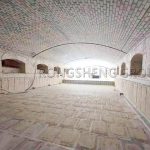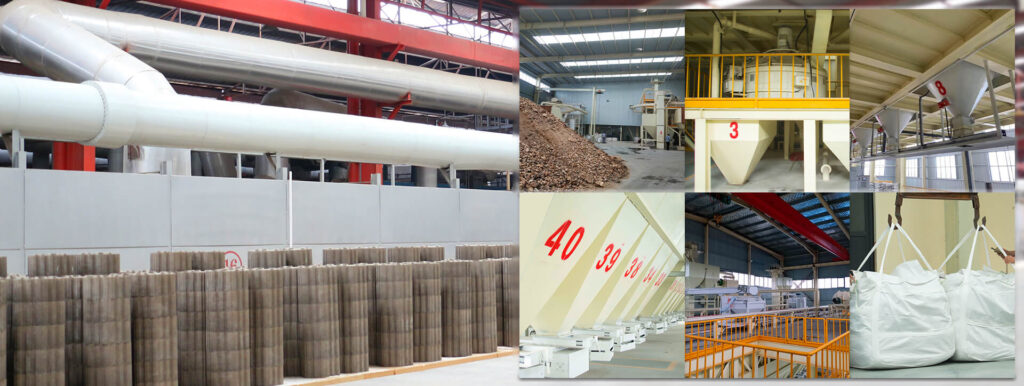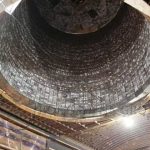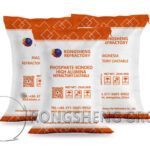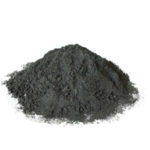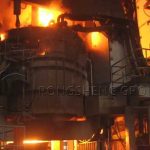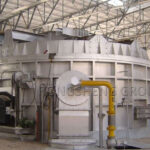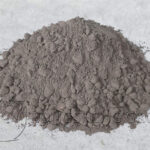The main materials of Ladle Purging Plugs are sintered magnesia, magnesia chromium, high alumina, and corundum.
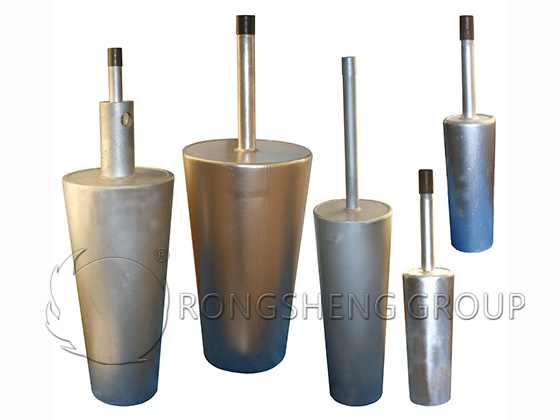
RS Ladle Purging Plug for Sale
- Sintered Magnesia Purging Plugs
Sintered magnesia materials refer to refractory materials with a MgO content of more than 80% and are alkaline refractory materials. It has high refractoriness and strong resistance to alkaline slag erosion. It has the advantages of not being corroded by Ca and CaO, and not polluting molten steel. However, its thermal expansion coefficient is large and its thermal shock resistance is poor. The material is prone to peeling off, which greatly reduces the service life of magnesium refractory materials.
- Magnesium Chromium Purging Plugs
Magnesium chromium material is a refractory material with MgO and Cr2O3 as the main components, and periclase and sharpite as the main mineral components. Chromium ore is inert to steelmaking slag and compatible with other refractory materials. Therefore, the emergence of magnesia-chromium materials has greatly improved the thermal shock resistance deficiencies of magnesia materials.
- High Alumina Purging Plugs
High-aluminum materials refer to refractory materials with an Al2O3 content greater than 48%. It has the characteristics of high hot and cold strength, good wear resistance, thermal shock resistance, peeling resistance, and good volume stability at high temperatures. However, its resistance to slag corrosion and penetration is poor, and it is not enough to resist the infiltration and penetration of molten slag into the bricks during the entire package.
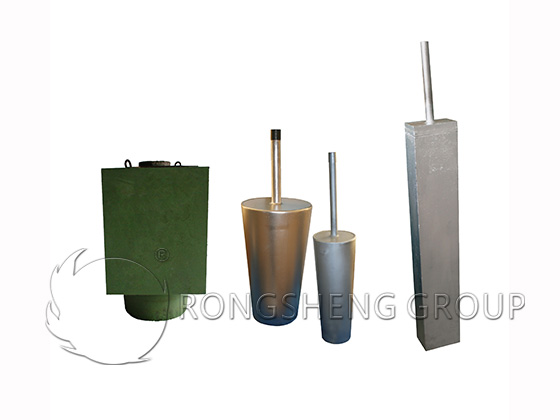
- Corundum Purging Plugs
Corundum material refers to a refractory material with an Al2O3 content of more than 90%. Corundum is made from industrial alumina or bauxite after sintering or electric fusion. When industrial alumina is used for electrofusion, white corundum is obtained with an Al2O3 content of greater than 98.5%. When bauxite is used as raw material, ordinary corundum is obtained. When iron filings are added, brown corundum is produced. When germanium quartz or germanium oxide is added, germanium corundum is obtained. When Cr2O3 is added, chromium corundum is obtained. The fused plate corundum directly uses industrial alumina as the main raw material. Platy corundum formed in a semi-molten state in an electric arc furnace at 1900-2000°C. Due to the ultra-high temperature in the formation area of fused plate-like corundum, it is conducive to the volatilization of volatile impurities such as Na2O, so it is also a process of self-purification. Plate-shaped alumina materials are characterized by high thermal conductivity, good thermal stability, high-temperature strength, and strong corrosion resistance, but the production cost is high.
Under high temperature and vacuum, the order of wetting angles of molten steel to several refractory oxides is as follows: Cr2O3>Al2O3>MgO. The stability of oxides is as follows: Al2O3>CaO>MgO>Cr2O3. Taking the above two points into consideration, using corundum as the main crystal phase of Purging Plugs is a better choice. At the same time, the melting point of Cr2O3 is 2275°C, which is higher than the melting point of Al2O3 (2050°C). Alumina and chromium oxide can form a continuous solid solution, and the solid solution formed by AI2O3-Cr2O3 has significantly enhanced corrosion resistance to iron oxide or slag. Adding a small amount of Cr2O3 can inhibit the excessive growth of alumina crystals, thereby reducing the internal stress of the crystals and improving the physical properties of the material. However, if too much Cr2O3 is added, the growth rate of corundum grains will be seriously affected, thereby reducing the physical properties of the material. Therefore, the appropriate introduction of Cr2O3 can improve the thermal shock stability, erosion resistance, and erosion resistance of the material. However, from the perspective of environmental protection, the introduction of Cr2O3 will cause environmental pollution, so the introduction of Cr2O3 should be carefully considered.
To realize the bottom-blown argon process of ladle Purging Plugs, the ladle Purging Plugs must have good high-temperature resistance, corrosion resistance, thermal shock resistance, and high-temperature volume stability. It has the characteristics of high strength, good air permeability, stable operation, accurate appearance and dimensions, and less penetration of molten steel.
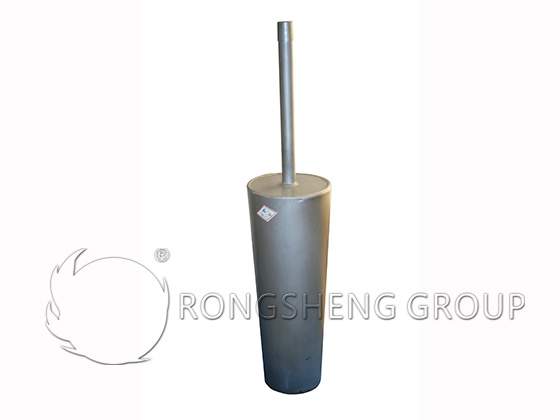
Three Commonly Used Structural Forms of Ladle Purging Plug
At present, the structures of Purging Plugs mainly include diffuse Purging Plugs, straight-through directional Purging Plugs, and slit directional Purging Plugs.
(1) Dispersed Purging Plugs.
Dispersed Purging Plugs have high porosity and permeability. In the actual production of this brick, by adding carbonaceous compounds to the mixture, since this substance can burn at low temperatures without leaving any residue. Therefore, the initial porosity can be obtained by burning out the intermediate material at low temperatures. There are interpenetrating pores of different sizes in the structure of diffuse Purging Plugs. When the air blowing is stopped during use, the steel and slag in the ladle will penetrate into the deeper areas of the Purging Plug through these pores. Therefore, solid areas are created on the working surface. When the ladle is stopped or when air blowing is restarted, the working surface of the Purging Plugs is subject to periodic penetration, erosion, and erosion of molten steel, causing the pores to become blocked, blocked, or peeled off. Due to the restrictions on the use of gas pressure in Japan, research generally only focuses on dispersion type Purging Plugs. The auxiliary plate is made of spherical alumina. Increasing the number of breathable pores and reducing the size of the pores, it has a good effect on inhibiting the penetration of molten steel.
(2) Straight-through Directional Purging Plugs.
The air channel of the straight-through directional Purging Plug is designed as a straight-through hole or a straight-through slit type. At present, the production of the through-hole type Purging Plugs used in ladles is relatively complicated, and the pore ventilation rate of the Purging Plugs is small. Therefore, the straight-through slit-type Purging Plug replaces the straight-through hole-type Purging Plug. The Purging Plug structure mainly used in converters is a straight-through hole type. Different through-hole Purging Plugs and their high-density structural materials were tested for their thermal shock resistance, iron oxide corrosion resistance, normal temperature strength, and other properties. It was found that through-hole Purging Plugs can maintain high bubbling reliability and improve the durability of the bricks.
(3) Slit Directional Purging Plugs.
At present, the slit directional type is the most commonly used structural form. Reasonably designed slits are designed based on on-site usage conditions including refining steel type, refining process, ladle capacity, temperature, molten steel static pressure, etc. It can achieve the best blow-through effect of Purging Plugs, increase their lifespan in use, and have stable safety performance.
With the requirements for Purging Plugs in the steelmaking process, dispersed Purging Plugs and straight-through Purging Plugs are rarely used. Slit-type Purging Plugs are widely used to replace the first two bricks. By controlling the number and length of slits, a good blow-through rate is ensured and its service life is extended.

